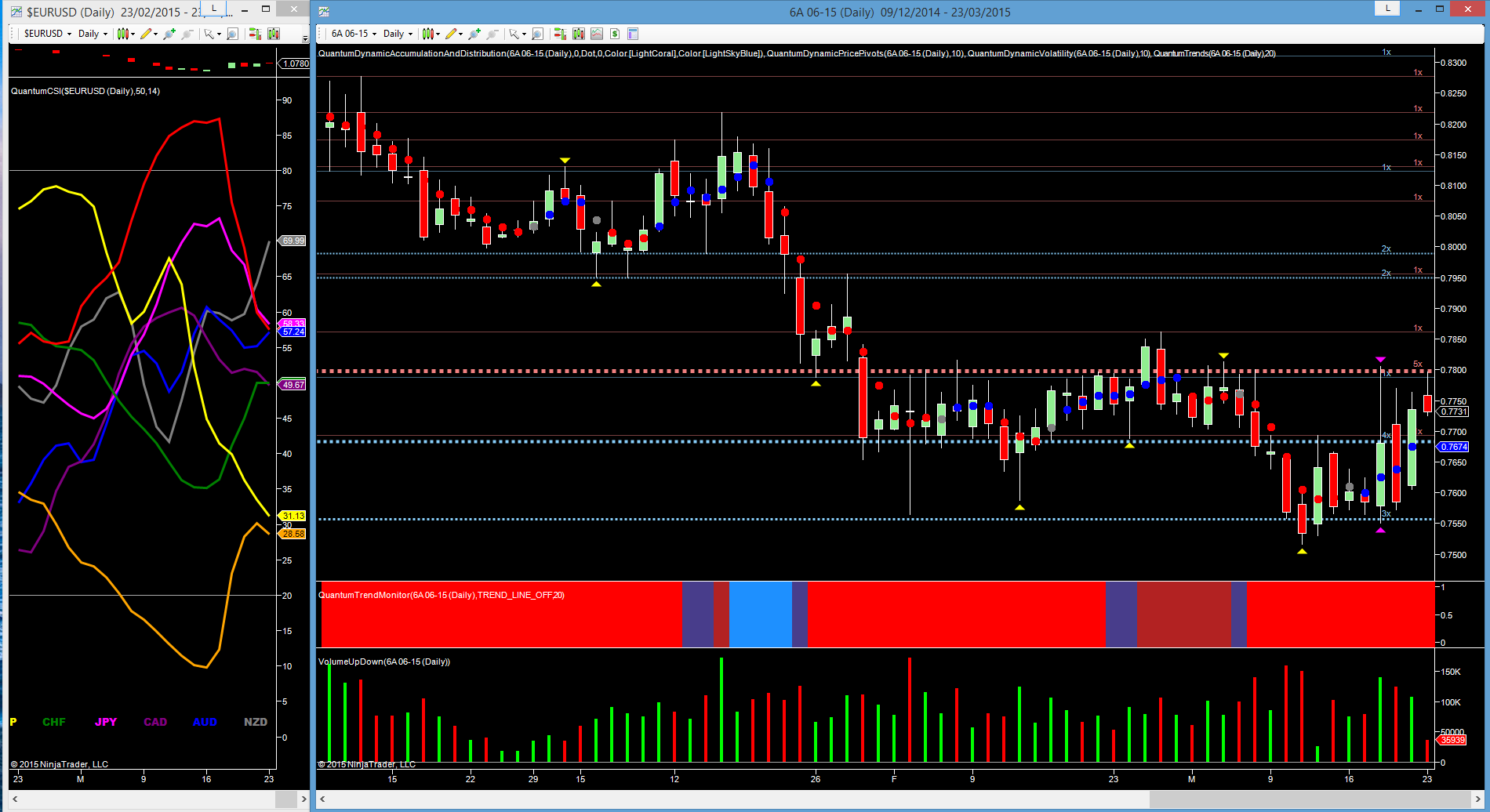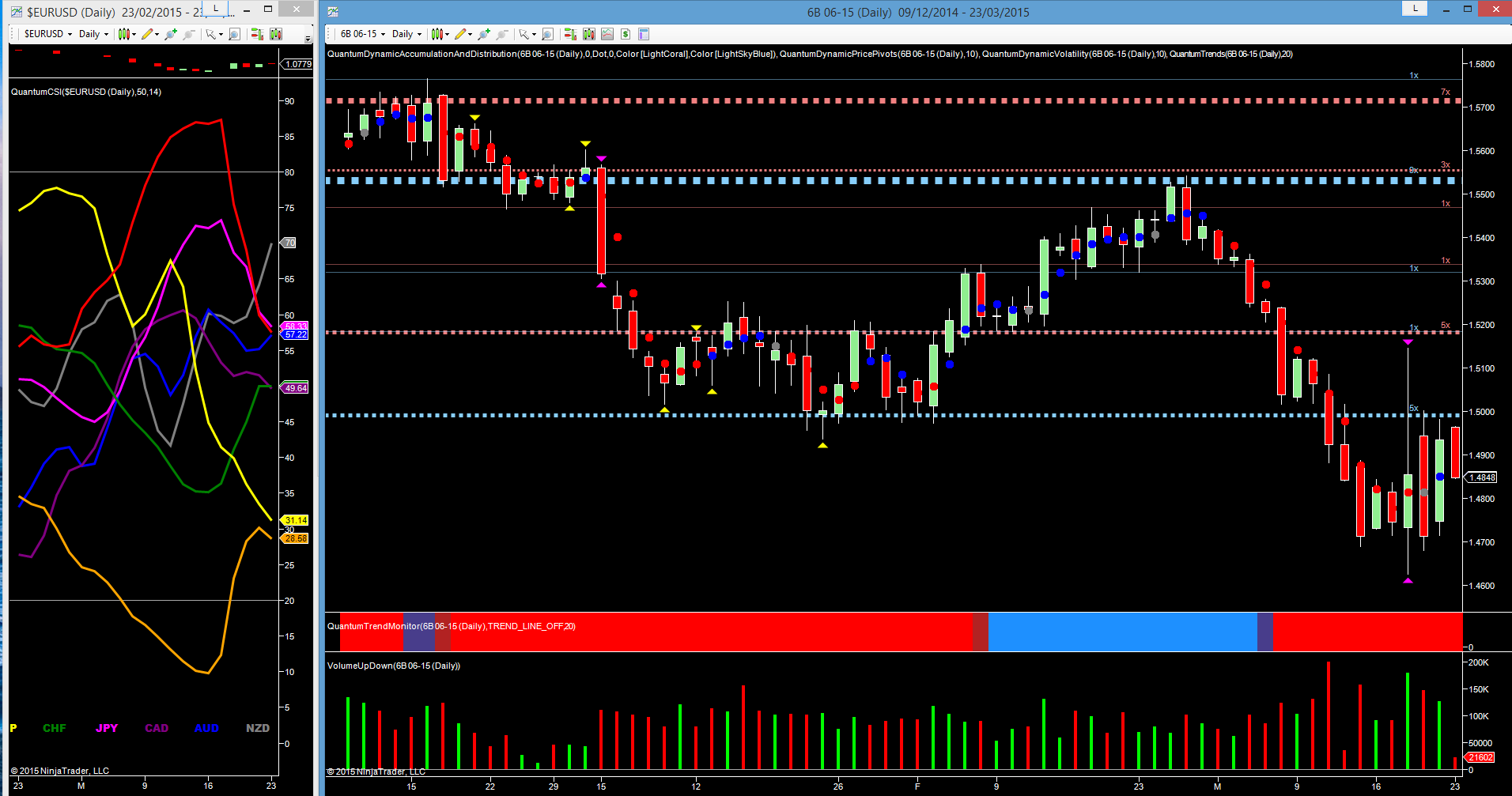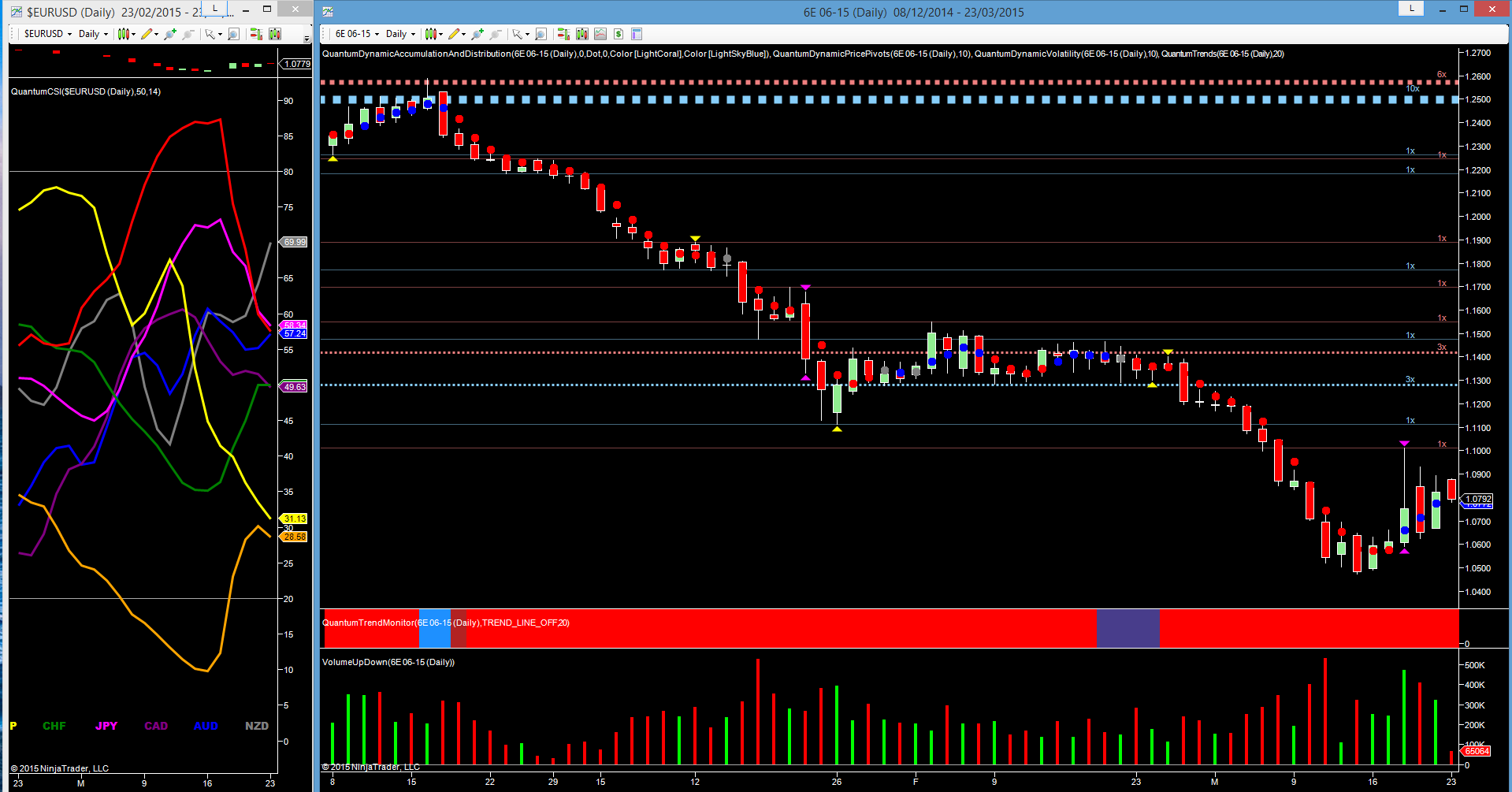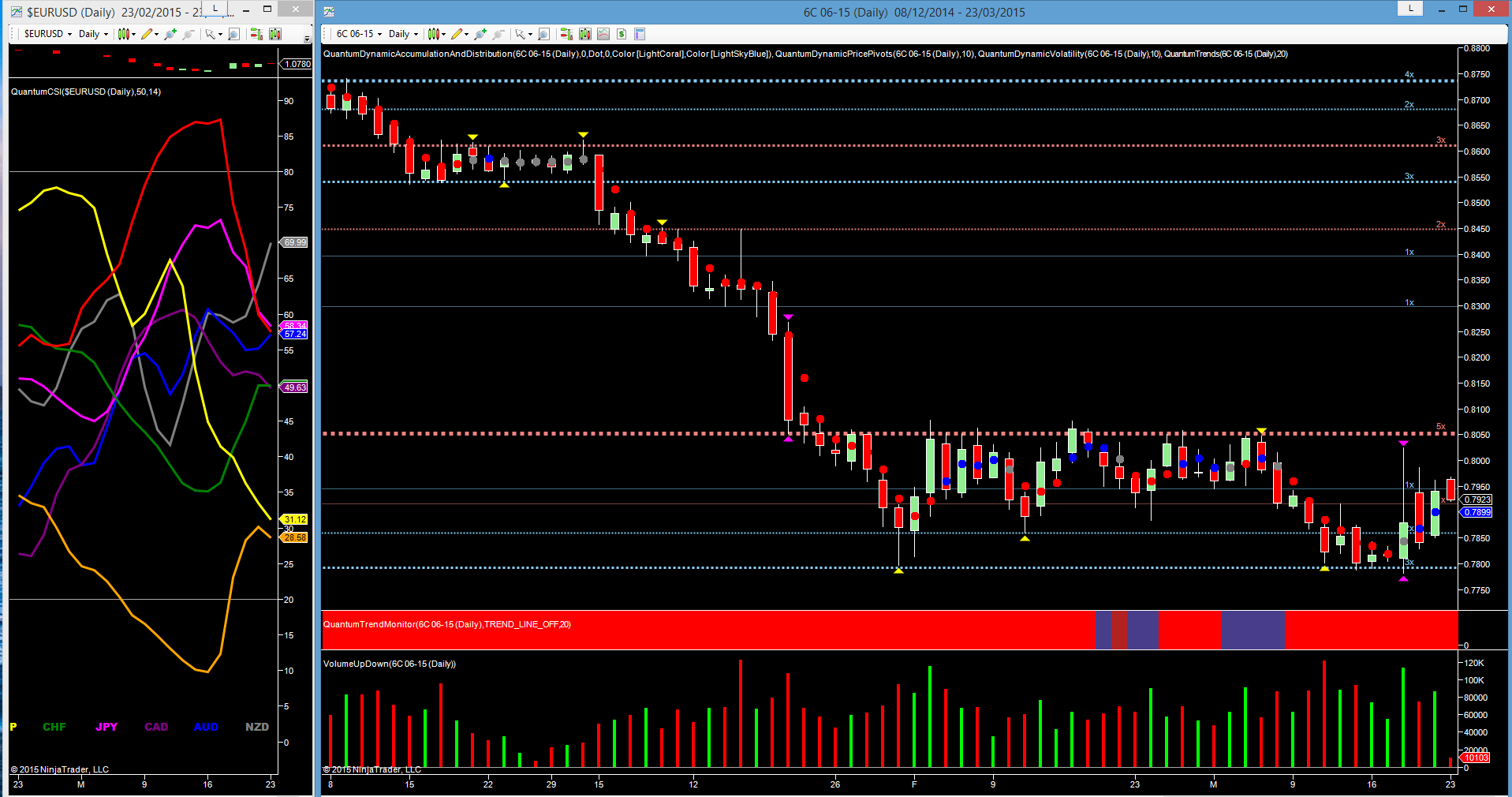
If there is one term which could best describe last week’s price action in the currency markets it would be that much over-used word – volatility. Indeed, it is the common thread which ties the four currency futures charts featured here together.
With the volatility indicator triggered on all of the daily charts, we're seeing a rare occurence, one indicative of the extreme behaviour that we witnessed last Wednesday. The indicator itself is denoted on the chart with the purple triangles to the top and bottom and is triggered whenever there is a move beyond the average true range for the pair. This is then generally followed by a classical reaction of a retracement back inside the range of the bar or candle. The reason for this is straightforward since such price action is normally associated with stop hunting on news or data. And on Wednesday the price action was the result of the FOMC. It was an opportunity too good to miss.
Moving to the technical picture for the pairs and starting with the 6A, the Aussie dollar, the daily chart neatly encapsulates Wednesday’s extreme range with the resistance at 0.7800 duly tested on the day with the platform of support holding below at 0.7550. Since then the pair has continued to trade within this wide range with the overnight price action testing this ceiling of resistance once again.
Turning to the currency strength indicator to the left of the chart, the US dollar (the red line) has now moved sharply away from its overbought position, reflective of the Fed’s more dovish stance, and with the Aussie dollar (blue line) continuing to climb we may see some further upside momentum to the pair in due course with a possible breach of the resistance at 0.7800, followed by a continuation higher to test the 0.7950 to 0.8000.
Turning to the British pound and the June 6B contract, once again it is volatility which defines the recent price action, with Wednesday’s over-reaction breaking higher and spiking through the key 1.5000 price point and almost touching 1.52. Since then, the ceiling of resistance at 1.5 has held firm, resulting in the pair trading lower at time of writing, at 1.4854.
The primary difference here is revealed on the currency strength indicator where the British pound (the yellow line) is continuing to move lower in lock step with the dollar and reflective of the longer term bearish sentiment for sterling.
Meanwhile the technical picture for the June contract for the 6E, EUR/USD, is more akin to the 6A with last Wednesday’s statement being the catalyst for a change in sentiment for the euro, which until that point had been heavily oversold. Here to the volatility indicator was triggered, moving the pair over 400 pips and testing the resistance in place in the 1.1 price region.
For the euro, of course, it has been a case of extreme bearishness (as evidenced by the CFTC data) and it is therefore no surprise to see a bounce higher.
The June contract for the 6C, the CAD/USD, above, which is perhaps the most interesting of the four charts. Here, prior to Wednesday’s Fed statement the pair has been trading in an extended consolidation phase since late January with the ceiling capped at 0.8050 and the floor at 0.7800. Both these levels are extremely well defined. For longer term traders (despite last Wednesday’s volatility) it is still a question of patience with any breakout being confirmed with volume. What is also interesting to note is that last week’s volatility candle duly tested both levels, reinforcing their significance.
Finally, if there is one lesson we can take from last week, it is the continuing dominance of the US dollar and its impact across all markets and instruments. Whilst this is perhaps obvious, last week’s reaction was a stark reminder of the power of both the Fed and the currency of first reserve.
Indeed this may be a feature of trading this week, with a raft of Fed speakers all set to hit the media which may deliver further volatility as a result. So stand by for some more explosive price action.



